On View
‘There’s Enough Damsels in Distress’: Artist Genevieve Gaignard Wants to Undermine Your Assumptions About Beauty and Blackness
In her first New York show, the artist creates unexpected characters that defy stereotypes.
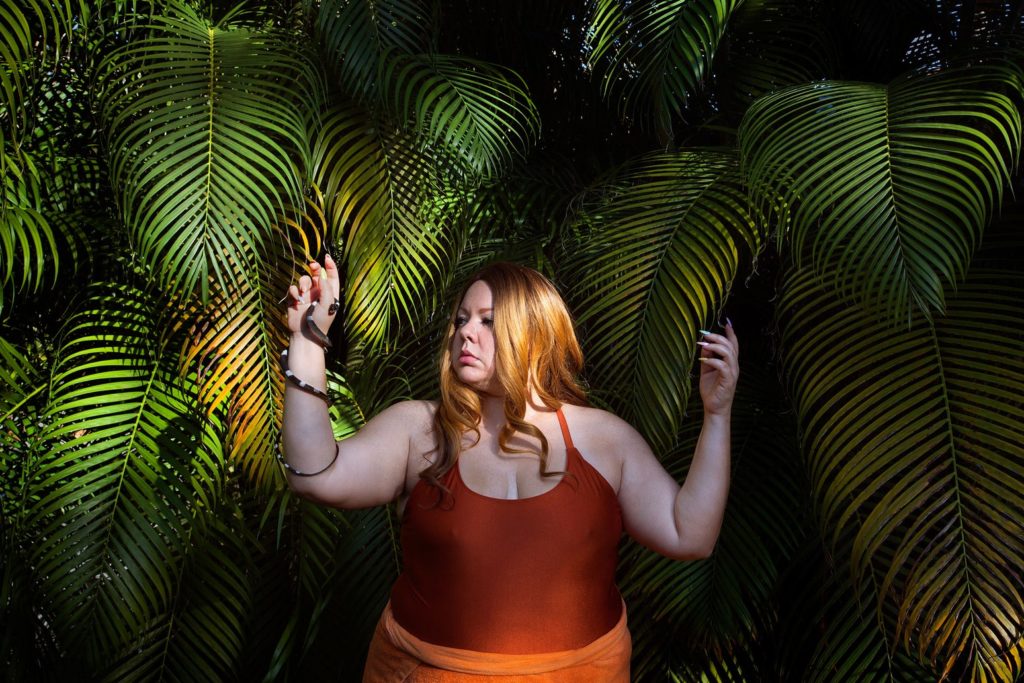
In her first New York show, the artist creates unexpected characters that defy stereotypes.

Sarah Cascone

Genevieve Gaignard’s work is deceptive—and that’s no accident. Her pleasingly arranged collages, heavily knick-knacked installations of cozy-looking domestic interiors, and well-lit, cheerfully colorful portrait photography draw the viewer in, belying her willingness to confront the sensitive issues of race, stereotypes, beauty standards, consumption, and identity.
Each photograph features Gaignard herself, transformed by wigs and costumes into a variety of characters. The artist is a fair-skinned mixed-race woman of color who can take on vastly disparate identities, casting herself one moment as a prim blonde housewife and the next as a young woman with hoop earrings and a shirt that reads “Hoodrat Thangs.”
“I’m trying to show that blackness comes in many different shades,” Gaignard explained to artnet News during a tour of her current exhibition, “Genevieve Gaignard: Counterfeit Currency,” her first in New York, at the FLAG Art Foundation.
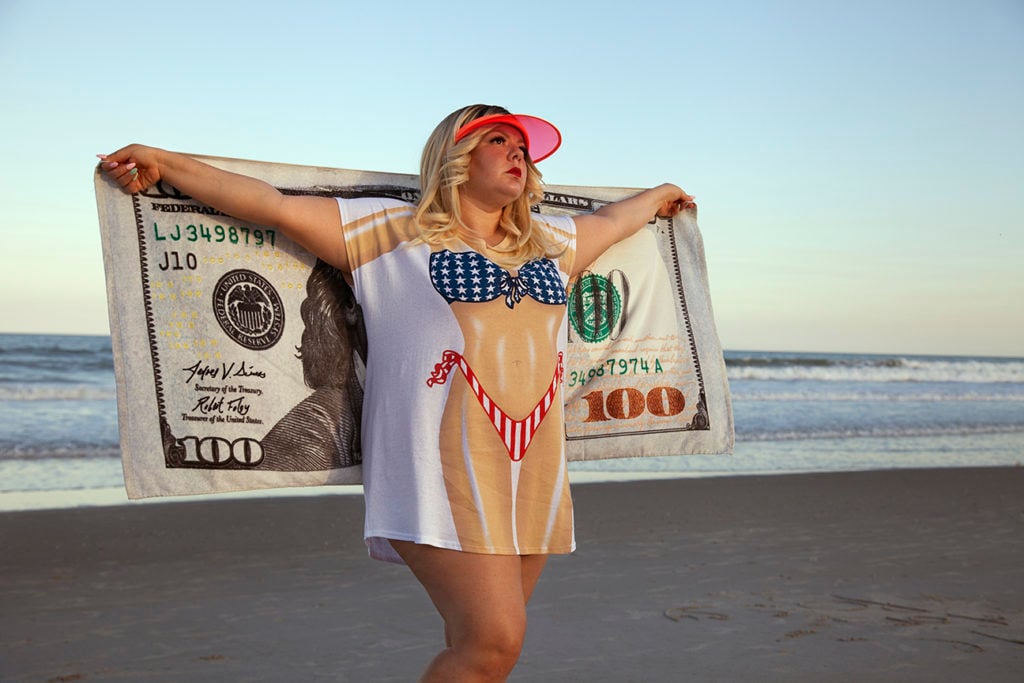
Genevieve Gaignard, Counter Fit (2018). Photo courtesy of Shulamit Nazarian, Los Angeles/the FLAG Art Foundation, New York; ©Genevieve Gaignard.
The show features new work, including photographs of the artist as several different characters inspired by Florida, taken there during a recent artist’s residency at the Fountainhead in Miami. “It’s my own stereotypes that come to mind of a place, based on what I see on television or in magazines,” Gaignard explained.
With each photograph, however, Gaignard invites you to look beyond the surface and consider who the subject might really be. She looks to imbue the work with greater significance, inserting subtle references to the media and politics, often with a sarcastic edge.
In Counter Fit, a blonde woman stands on the beach, clad in translucent pink sun visor and an oversize bikini t-shirt, the figure of a much smaller woman in a stars and stripes bathing suit printed on the fabric. She’s holding up a towel behind her, a giant 100 dollar bill emblazoned with Benjamin Franklin’s face.
It’s details like that that can become the genesis for an image. “Maybe I’m walking around in a Walmart and I see this towel that’s ridiculous. I’m like, ‘who has this towel?'” said Gaignard, who also drew inspiration from tacky Miami souvenir shops.
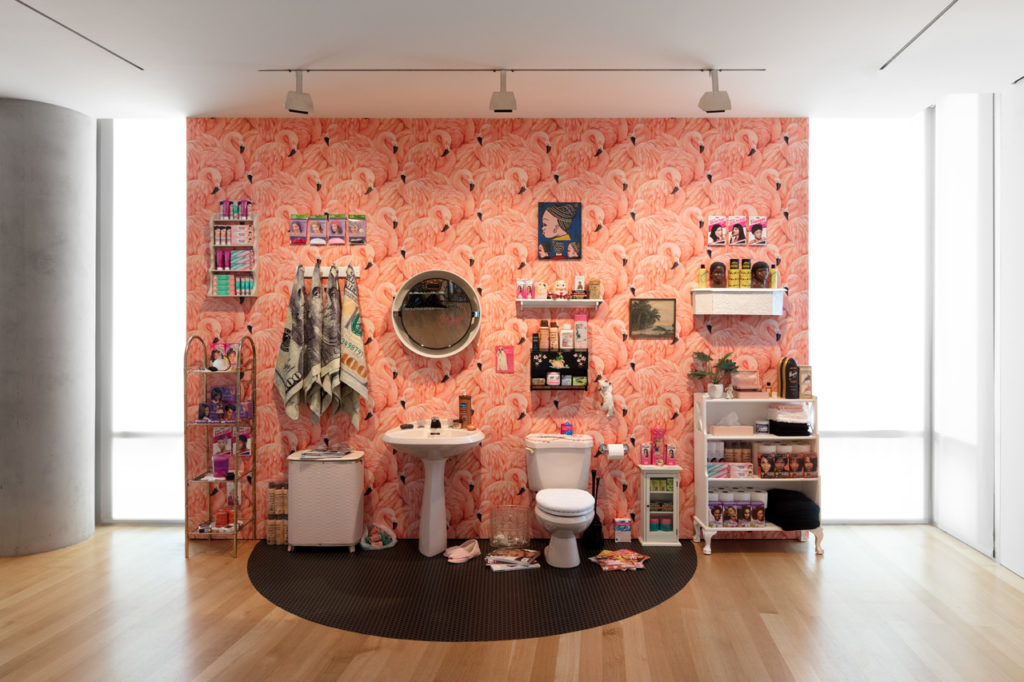
Genevieve Gaignard, Be More (2018). Photo courtesy of Shulamit Nazarian, Los Angeles/the FLAG Art Foundation, New York; ©Genevieve Gaignard.
The Ben Franklin towel appears again, several of them hanging from a hook on the gallery wall in Be More, one of three large-scale installations, or “mise-en-abîme” environments included in the exhibition. These domestic tableaux—a pink flamingo-wallpapered bathroom and a living room decked out in black panther figurines—feature elements from Gaignard’s photos, suggesting places where these characters might live.
In Be More, rows of black hair care and beauty products are carefully displayed on the bathroom shelves. It’s a reference to our consumerist culture, and also hints at an aspirational beauty “ideal you can reach if you have said products,” Gaignard explained, noting that “hair is a huge signifier.”
In Don’t Wish Me Well, a tropical-looking living room with wicker furniture, an ashtray full of lipstick-stained cigarettes sits on the coffee table. The butts are a call back to those smoked by the matronly woman in Rita and Frida, the portrait on the adjacent wall. Her hair in a tall red bouffant, Gaignard wears a large black fur coat and is walking a small white dog with the aid of a cane.
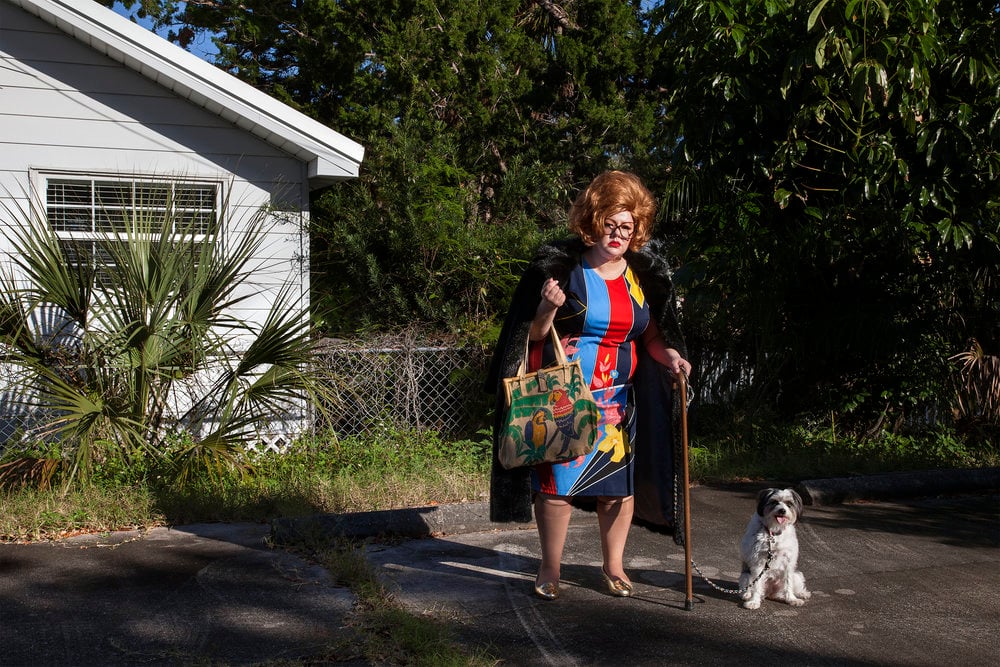
Genevieve Gaignard, Rita and Frida (2018). Photo courtesy of Shulamit Nazarian, Los Angeles/the FLAG Art Foundation, New York; ©Genevieve Gaignard.
What you can’t see in the photo is the coat’s lining, which Gaignard has emblazoned with Black Panther patches, a kind of hidden armor of black empowerment. The garment hangs next to the photo, creating a jarring juxtaposition; it also reinforces the photo’s link to the living room space, which is decorated with panther imagery and antique black Americana.
“You see this image, you make a certain read on her, and then you’re like ‘Wait, this is her living room? That’s the inside of her coat? I had no idea!'” Gaignard said. “It’s more about letting the viewer connect the dots.”
Each domestic space features vintage-style wallpaper, creating a visual tie to the background of Gaignard’s collages, overlaid with photographs and advertisements cut from old LIFE, Ebony, and Jet magazines.
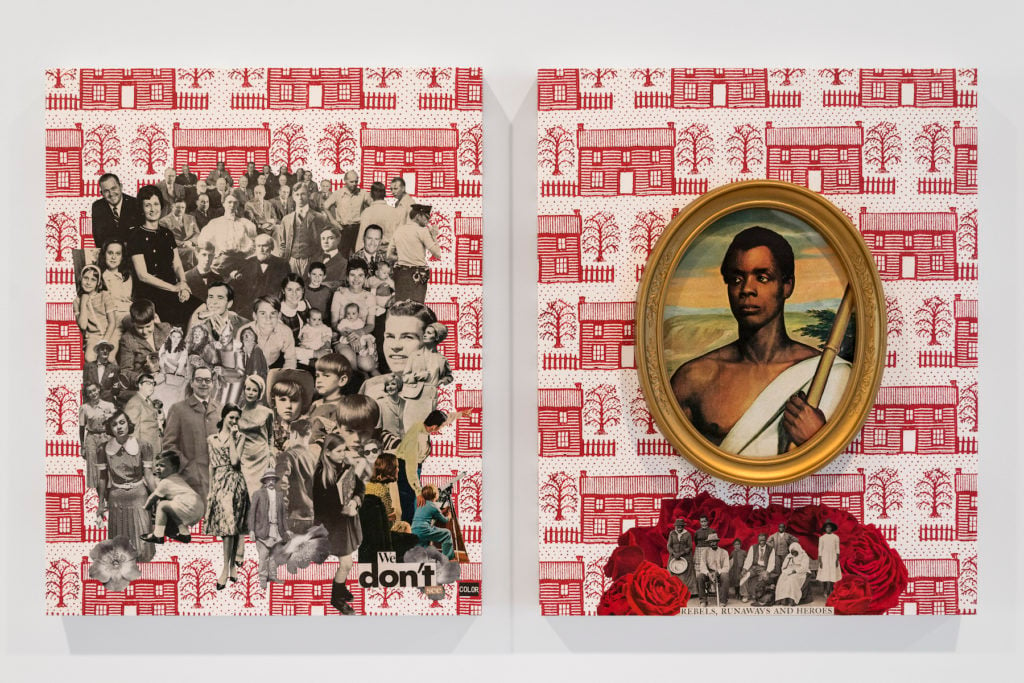
Genevieve Gaignard, Red, White & You (2018). Photo courtesy of Shulamit Nazarian, Los Angeles/the FLAG Art Foundation, New York; ©Genevieve Gaignard.
In the diptych Red, White & You, a number of black and white photos of white people cover a red and white print of a farmhouse. The wallpaper made Gaignard think of a plantation, so she added an old-fashioned-looking portrait of an African man and a vintage photograph of runaway slaves to the second panel. The words “we don’t see color” are written below the collaged white people.
“That’s something that white folks say all the time, and that’s supposed to be like, ‘oh, thank you!’ But no, oh, you don’t see me,” said Gaignard. “You only see in your tunnel, your bubble.”
Seeing Is Believing, the third “mise-en-abîme,” challenges that voluntary blindness. It is the simplest of the three works: A lone mirror, the reflective surface replaced with opaque black glass, hangs on a wall papered with a print of Victorian-era female faces, red-lipped and ivory-skinned.
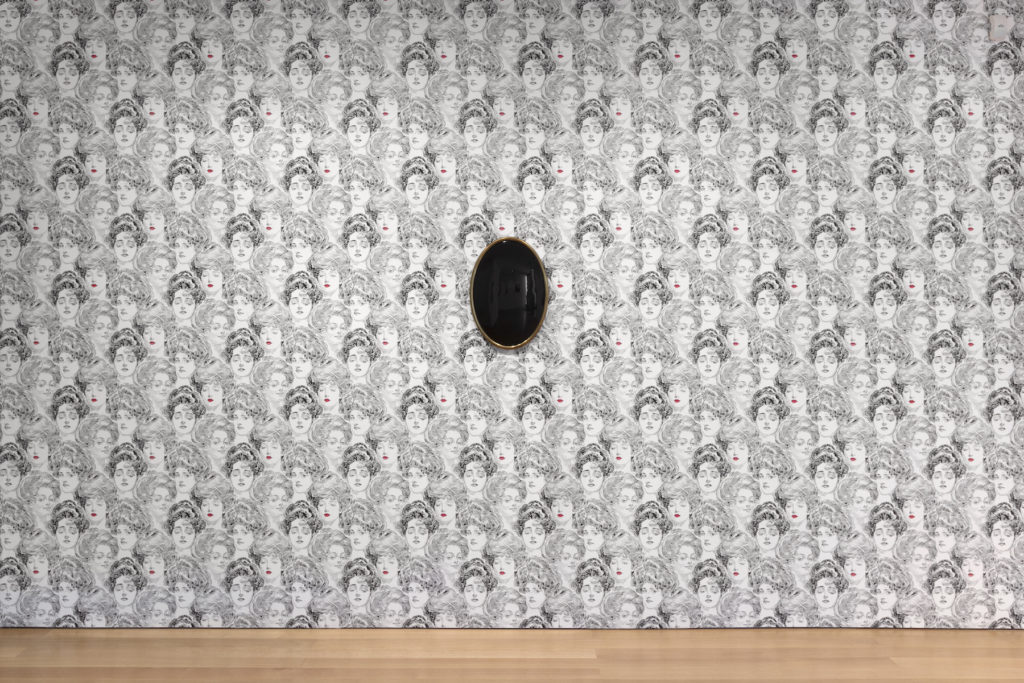
Genevieve Gaignard, Seeing Is Believing, (2018). Photo courtesy of Shulamit Nazarian, Los Angeles/the FLAG Art Foundation, New York; ©Genevieve Gaignard.
“It’s about putting yourself in the position of blackness,” said Gaignard, who was inspired by the experiences of a black friend who noticed people locking their doors as he walked down the street in a predominantly white community. As you stare into the void of the black mirror, she explained, the wallpaper stares back, “white faces looking at you with judgment.”
This sense of other, of not belonging, stands apart from Gaignard’s photographs, which feature women who immediately seem poised and self-confident, secure in their identity regardless of whether or not the viewer is able to pinpoint their racial background. That is intentional.
“I just want to portray females in these empowered ways,” said the artist. “There’s enough damsels in distress.”
See more photos from the exhibition below.

Genevieve Gaignard, Wet Hot American Summer (2018). Photo courtesy of Shulamit Nazarian, Los Angeles/the FLAG Art Foundation, New York; ©Genevieve Gaignard.

Genevieve Gaignard, Got You Covered (2018), coat, and Don’t Wish Me Well (2018), room installation. Photo courtesy of Shulamit Nazarian, Los Angeles/the FLAG Art Foundation, New York; ©Genevieve Gaignard.
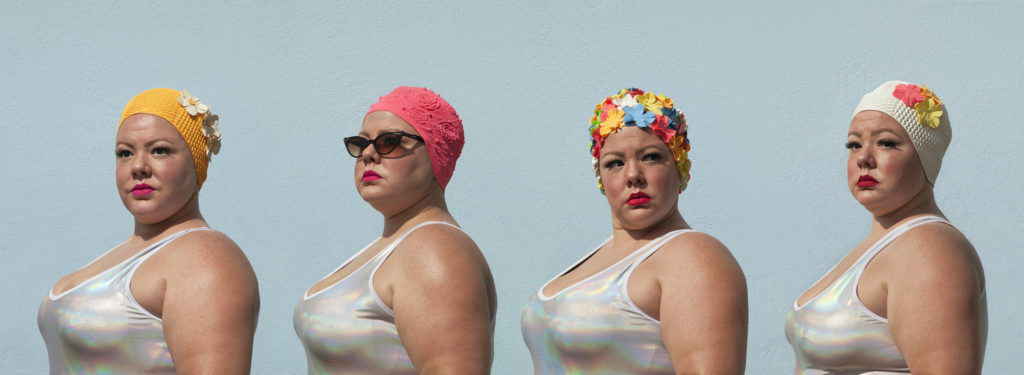
Genevieve Gaignard, (2018). Photo courtesy of Shulamit Nazarian, Los Angeles/the FLAG Art Foundation, New York; ©Genevieve Gaignard.
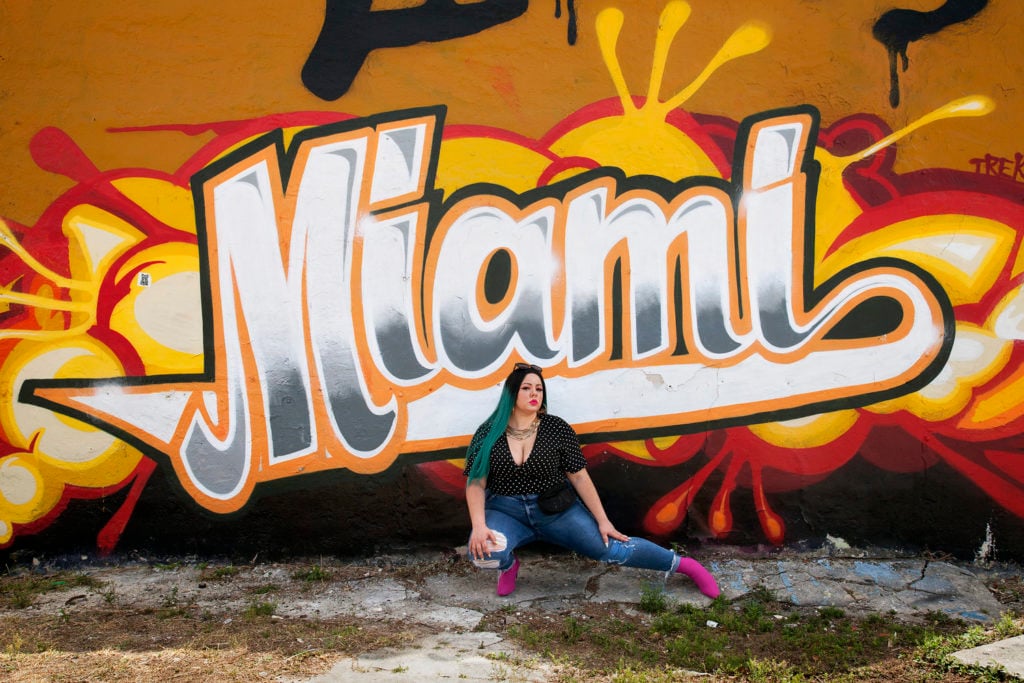
Genevieve Gaignard, Está Entera (She’s Whole), 2018. Photo courtesy of Shulamit Nazarian, Los Angeles/the FLAG Art Foundation, New York; ©Genevieve Gaignard.
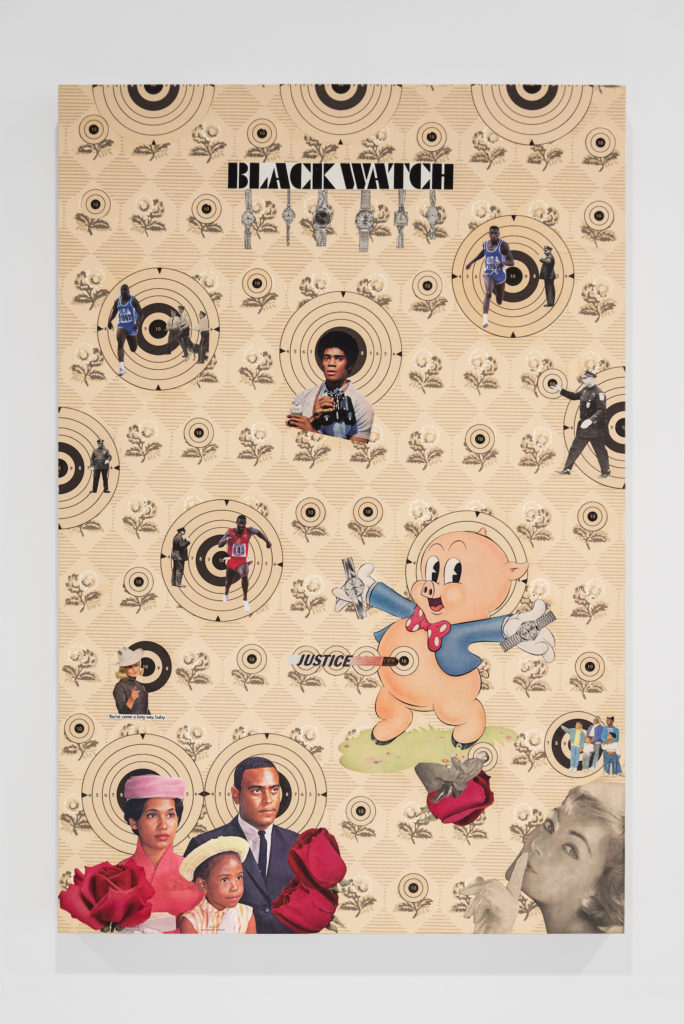
Genevieve Gaignard, Black Watch (2018). Photo courtesy of Shulamit Nazarian, Los Angeles/the FLAG Art Foundation, New York; ©Genevieve Gaignard.
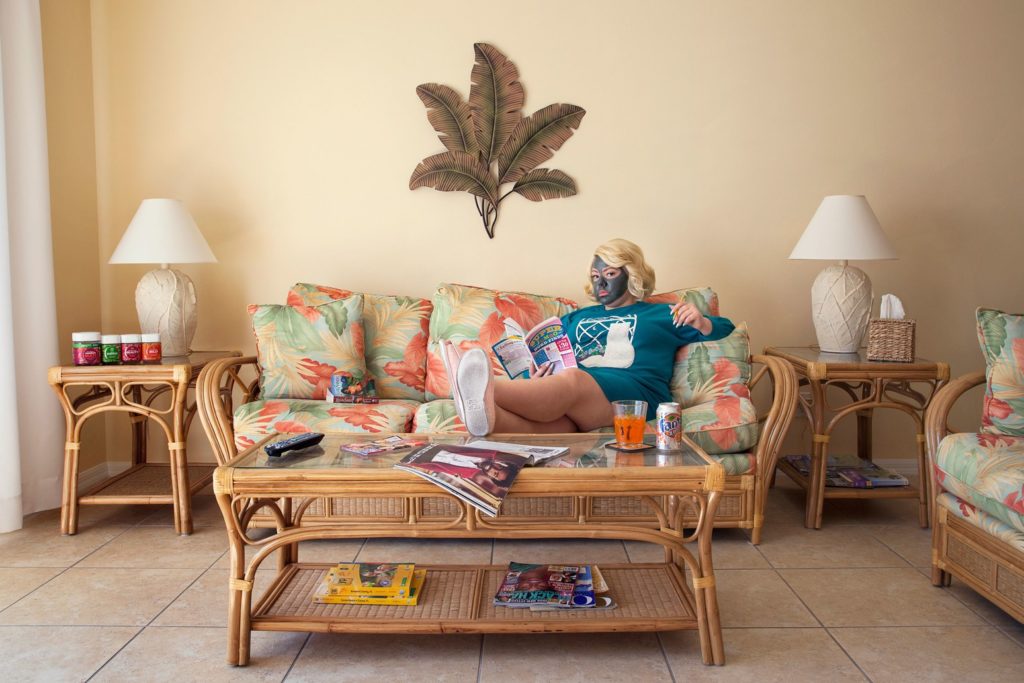
Genevieve Gaignard, Blackish (2018). Photo courtesy of Shulamit Nazarian, Los Angeles/the FLAG Art Foundation, New York; ©Genevieve Gaignard.
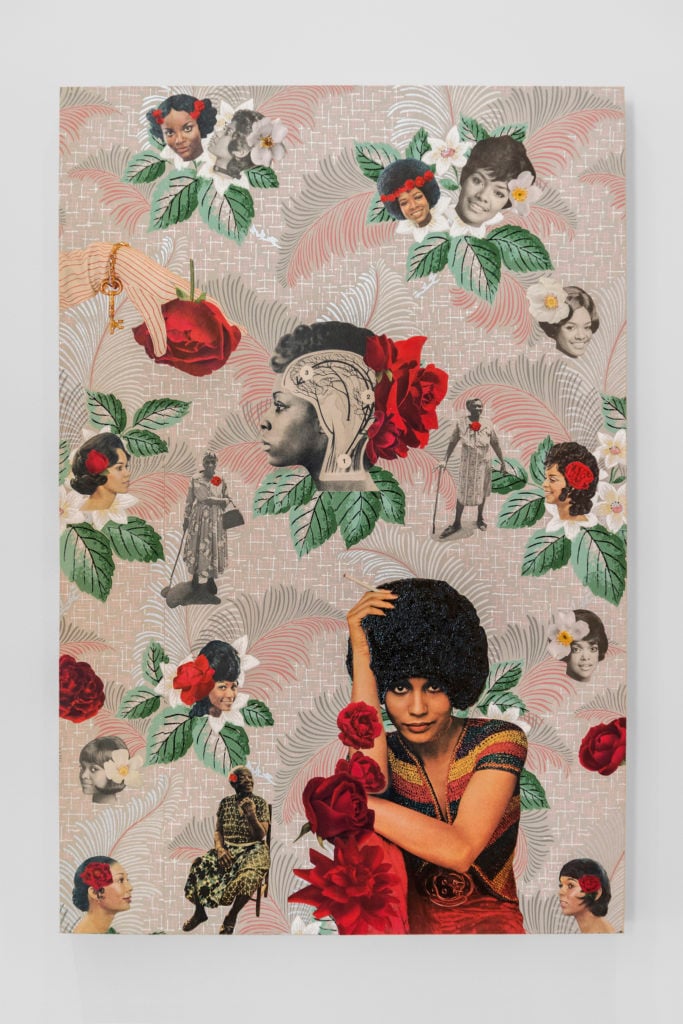
Genevieve Gaignard, She’s So Articulate (2018). Photo courtesy of Shulamit Nazarian, Los Angeles/the FLAG Art Foundation, New York; ©Genevieve Gaignard.
“Genevieve Gaignard: Counterfeit Currency” is on view at the FLAG Art Foundation, 545 West 25th Street, New York, June 5–August 17, and September 13–22, 2018.